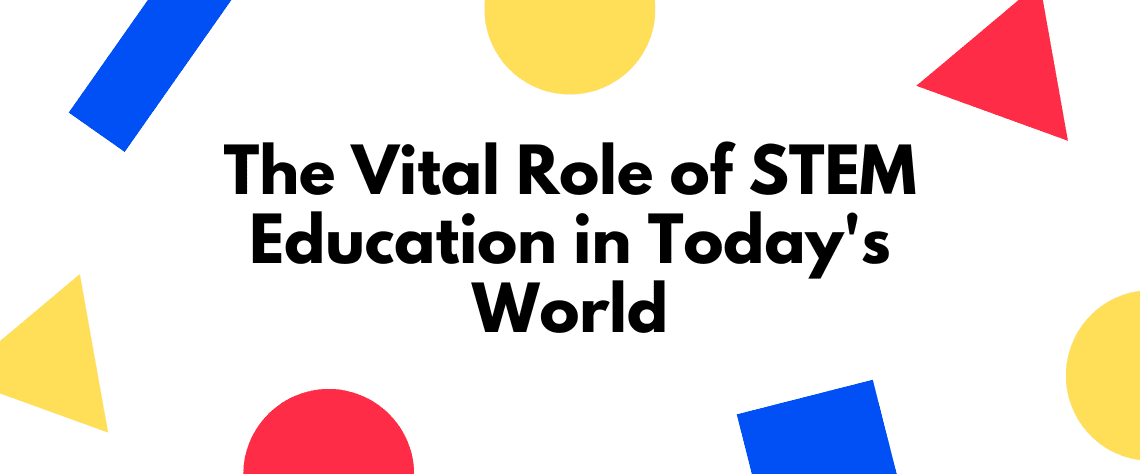In today’s rapidly evolving global landscape, the importance of STEM (Science, Technology, Engineering, and Mathematics) education cannot be overstated. As we stand on the brink of the Fourth Industrial Revolution, characterized by groundbreaking advancements in technology and innovation, STEM education is more crucial than ever in preparing students to stay relevant in the field of science and technology and contribute to a skilled and educated workforce.
Importance of STEM Education
Fostering Critical Thinking and Problem-Solving Skills
By selecting the STEM field, students are more likely to catalyze their ability of critical thinking and complex analytical skills. By engaging in hands-on learning experiences and real-world applications, students learn to approach challenges systematically, apply scientific principles, and devise creative solutions to address pressing issues facing society.
Driving Innovation and Technological Advancement
STEM disciplines are at the forefront of innovation and technological advancement, driving progress in fields such as artificial intelligence, biotechnology, renewable energy, and space exploration. A strong foundation in STEM education equips students with the knowledge, skills, and mindset needed to contribute to and thrive in an increasingly technology-driven world.
Meeting the Demands of the Job Market
The job market is increasingly dominated by STEM-related occupations, with a growing demand for professionals skilled in science, technology, engineering, and mathematics. By investing in STEM education, students are better positioned to pursue rewarding careers in high-growth industries and emerging fields, ensuring their long-term employability and success in a competitive job market.
Addressing Global Challenges
STEM education plays a pivotal role in addressing some of the most pressing global challenges, including climate change, healthcare disparities, food security, and cybersecurity. By equipping students with the knowledge and skills to tackle these complex issues, STEM education empowers future generations to make meaningful contributions to building a more sustainable, equitable, and prosperous world.
Promoting Diversity and Inclusion
STEM education has the power to break down barriers and promote diversity and inclusion in traditionally underrepresented groups, including women, minorities, and individuals from low-income backgrounds. By fostering a culture of inclusivity and equity, STEM education opens doors to opportunities for all students, regardless of their background or circumstances.
Goals & Objectives Of STEM Education
STEM (Science, Technology, Engineering, and Mathematics) education is designed to prepare students for success in an increasingly complex and technology-driven world. By integrating these core disciplines into the curriculum, STEM education aims to achieve several overarching goals and objectives:
Fostering Creativity and Innovation
STEM education encourages students to think creatively, explore new ideas, and innovate solutions to real-world problems. Through project-based learning experiences, design challenges, and collaborative activities, students are empowered to unleash their creativity and imagination, driving innovation and pushing the boundaries of what is possible.
Developing STEM Literacy
Another key goal of STEM education is to develop STEM literacy—the ability to understand and apply concepts from science, technology, engineering, and mathematics in everyday life. By building a strong foundation in these core disciplines, students gain the knowledge and skills needed to navigate an increasingly complex and interconnected world.
Promoting Collaboration and Communication
STEM education emphasizes collaboration and communication skills, as students often work in teams to solve problems and complete projects. Through collaborative learning experiences, peer-to-peer interactions, and presentations, students learn to effectively communicate their ideas, listen actively, and work collaboratively towards common goals—a critical skill set in the modern workforce.
Encouraging Lifelong Learning
STEM education instills a passion for learning and a growth mindset in students, encouraging them to embrace challenges, persevere in the face of setbacks, and continually seek out new knowledge and experiences. By fostering a culture of lifelong learning, STEM education prepares students to adapt to rapidly changing technologies and industries throughout their lives.
Addressing Real-World Challenges
STEM education aims to connect classroom learning to real-world challenges and opportunities, empowering students to apply their knowledge and skills to make meaningful contributions to society. Whether it’s designing sustainable solutions to environmental problems, developing new medical treatments, or creating innovative technologies, STEM education equips students to tackle some of the most pressing issues facing our world today.
Conclusion
At Titan College, we recognize the transformative power of STEM education and are committed to providing our students with the tools, resources, and support they need to excel in these critical disciplines. Through our innovative curriculum, state-of-the-art facilities, and dedicated faculty, we aim to inspire and empower the next generation of STEM leaders, innovators, and changemakers.
By embracing the principles of STEM education, we can unlock endless opportunities for our students and pave the way for a brighter, more prosperous future for all. Together, let us harness the power of STEM to shape a world where innovation knows no bounds and every student has the opportunity to reach their full potential.




Leave A Comment